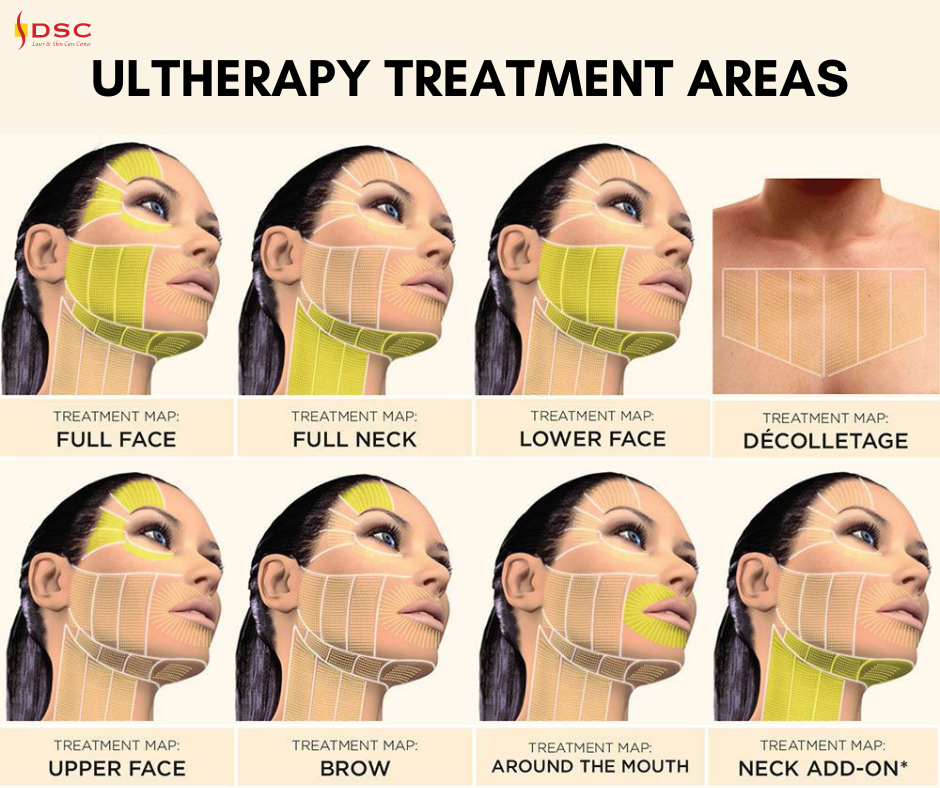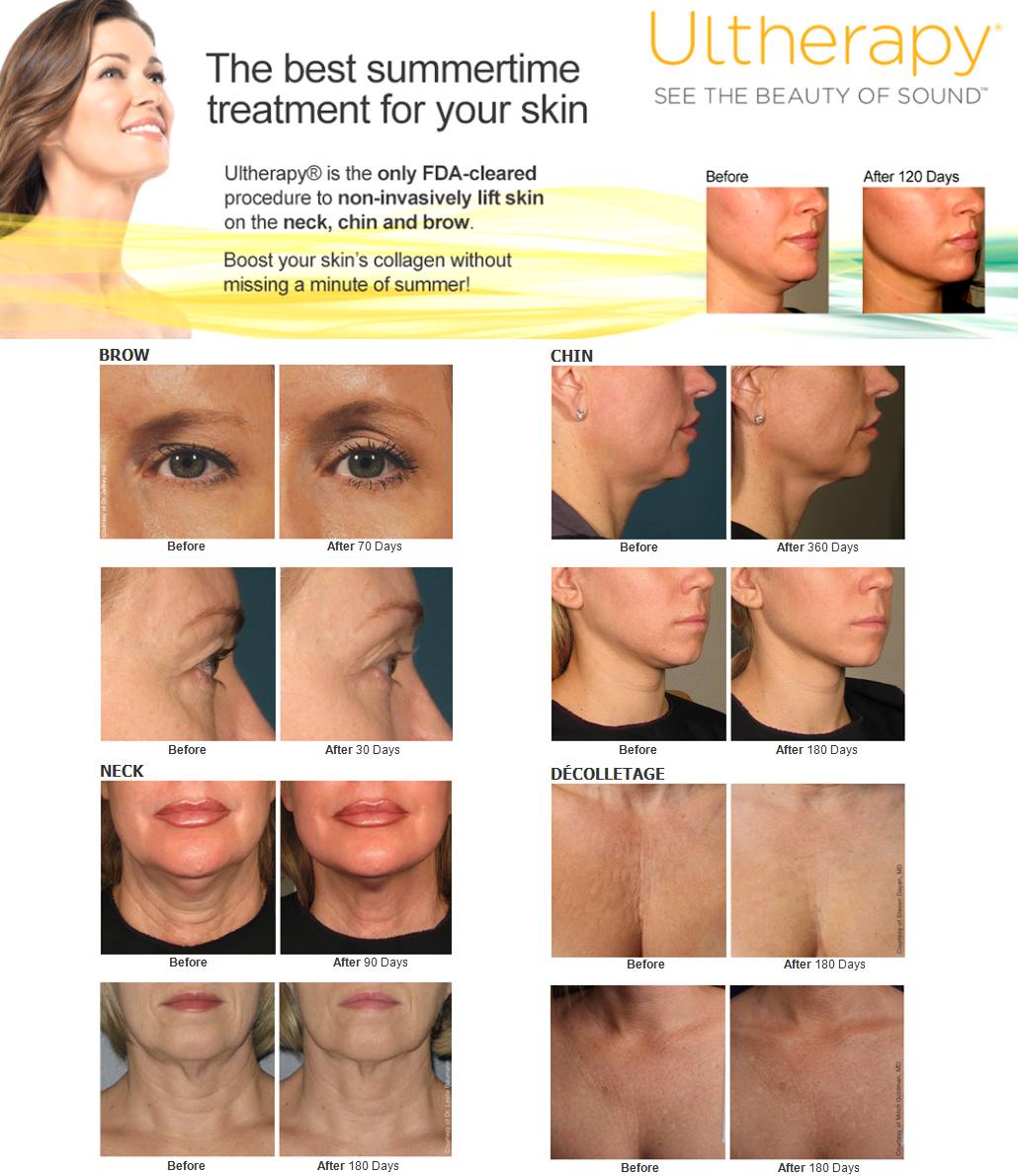Why Ultherapy May Be Clinically Needed: Checking Out the Factors for a Non Surgical Lift
Ultherapy is gaining interest as a viable alternative for people encountering skin laxity due to maturing or particular medical problems. This non-surgical treatment boosts collagen manufacturing, offering an option that avoids the healing time connected with invasive treatments. As individuals seek to improve not just their appearance however also their overall skin health, recognizing the scenarios that require Ultherapy's usage comes to be vital. What factors add to its clinical necessity?
Understanding Ultherapy: What It Is and Exactly how It Works
Ultherapy, a non-invasive cosmetic treatment, uses ultrasound innovation to stimulate collagen production and advertise skin tightening up. By supplying concentrated ultrasound power deep right into the skin, it targets the fundamental layers generally attended to in surgical renovations. This process motivates the body's natural healing feedback, leading to gradual lifting and firm of the skin over time.

Treatment sessions commonly last between 30 to 90 mins, relying on the size of the location being dealt with. While results might not be immediately noticeable, suitable results normally show up within 2 to 3 months as collagen proceeds to create. Ultherapy offers an engaging non-surgical choice for individuals looking for skin restoration without the requirement for invasive procedures.
The Aging Process: Results on Skin Elasticity and Collagen
Aging undoubtedly brings adjustments that diminish skin flexibility and collagen manufacturing, causing noticeable signs of sagging and creases. As individuals age, the skin's capability to retain dampness declines, leading to a drier and less resistant surface. Collagen, an important healthy protein in charge of skin structure, likewise diminishes, creating the skin to lose its firmness and vibrant appearance. Factors such as sun direct exposure, ecological toxins, and lifestyle choices additionally accelerate this decrease in skin high quality.
This loss of flexibility and collagen produces a cascade of modifications, including the development of dewlaps, deepening nasolabial folds up, and a general sagging look. The skin's support system compromises, making it much more susceptible to the impacts of gravity. Numerous people look for interventions like Ultherapy to fight these aging effects, aiming to restore a much more vibrant, tight appearance without the requirement for invasive surgical treatments.
Clinical Problems That May Benefit From Ultherapy
Ultherapy is progressively acknowledged for its possible benefits in dealing with different medical conditions. People experiencing skin laxity, those in post-surgical recovery, and patients with chronic skin disease might locate this non-invasive therapy useful. By stimulating collagen production, Ultherapy can boost skin suppleness and improve overall appearance for these groups.
Skin Laxity Issues
Skin laxity can be a substantial worry for people experiencing various medical problems that affect the honesty and flexibility of their skin. Conditions such as Ehlers-Danlos syndrome, which disrupts collagen manufacturing, can bring about early skin aging and drooping. Additionally, people with autoimmune conditions might experience skin modifications that contribute to laxity. Hormone changes, particularly throughout menopause, also contribute in decreasing skin suppleness. Ultherapy, making use of ultrasound innovation, targets the much deeper layers of skin, stimulating collagen manufacturing and tightening up the affected areas. This non-invasive therapy may offer a viable solution for those looking for to address skin laxity arising from these medical problems, boosting both appearance and self-worth without the need for surgical treatment.
Post-Surgical Recuperation Help
Post-surgical healing can commonly existing difficulties, particularly for people experiencing skin laxity due to surgical interventions. Ultherapy functions as a potential help in this scenario, utilizing ultrasound technology to boost collagen production and enhance skin rigidity without intrusive treatments. Clients that have actually undergone surgical procedures such as renovations, lipo, or various other body contouring procedures might discover that Ultherapy improves their recuperation by attending to unequal appearance and laxity that can happen post-operation. This non-surgical method can lead to boosted aesthetic outcomes, potentially minimizing the need for additional medical interventions. Moreover, it might assist reduce discomfort linked with the recovery procedure, offering clients an extra comprehensive recuperation experience. Ultherapy can be a useful alternative in post-surgical treatment.
Persistent Skin Problems
For individuals experiencing persistent skin disease such as acne scars, rosacea, or laxity due to aging, non-invasive treatments might use significant alleviation and improvement. Ultherapy has actually emerged as a promising alternative, using ultrasound modern technology to promote collagen production deep within the skin. This procedure can enhance skin appearance and elasticity, resolving concerns like unequal complexion and sagging. Particularly, those with rosacea might experience reduced soreness and inflammation, while patients with acne marks can gain from boosted skin smoothness and overall appearance. Notably, Ultherapy offers a non-surgical option that minimizes healing time and dangers linked with invasive treatments, making it an attractive choice for individuals seeking efficient monitoring of persistent skin problem.
Emotional Effect of Sagging Skin and Visual Problems
The psychological toll of aging typically manifests in the type of sagging skin, which can significantly influence a person's self-worth and general emotional well-being. Lots of people connect youthful looks with power and good looks, bring about sensations of insufficiency when confronted with visible signs of aging. This perceived decline in beauty can cause social stress and anxiety, withdrawal from social interactions, and a raised fixation with one's look.
People may feel urged to look for visual treatments to deal with these concerns, as the need to preserve a younger appearance can become intertwined with individuality. The psychological results of drooping skin may also bring about depression or a reduced top quality of life. Non-surgical options like Ultherapy emerge as possible solutions, intending not just to rejuvenate the skin yet likewise to recover self-confidence and a positive self-image, inevitably resolving the much deeper emotional ramifications of aging.
Contrasting Ultherapy to Typical Surgical Options
When contrasting Ultherapy to traditional medical choices, considerable differences emerge in both cost-effectiveness and recovery time. Ultherapy deals a non-invasive strategy that commonly leads to reduced expenses and marginal downtime for clients. On the other hand, surgical lifts typically require even more financial investment and a prolonged recovery duration.
Cost-Effectiveness of Ultherapy

Although traditional medical lifts typically feature significant ahead of time costs and prolonged recovery times, Ultherapy offers a compelling option that can supply similar results at a portion of the price. The ordinary price of a surgical facelift can range from $7,000 to $15,000, while Ultherapy therapies commonly fall between $2,000 and $4,500, depending upon the area treated and service provider know-how. In addition, the lack of comprehensive pre-operative evaluations and post-operative care connected with Ultherapy better adds to its cost-effectiveness. This approach not only minimizes monetary pressure but likewise enables individuals to purchase various other facets of their wellness and health. By doing this, Ultherapy arises as a monetarily viable option for those looking for face restoration without the worries of typical surgical procedure.
Recuperation Time Contrast
Healing time is a considerable aspect in the decision-making process for those thinking about cosmetic treatments. Ultherapy attracts attention as a non-surgical alternative that usually calls for marginal downtime. Many individuals can go back to their day-to-day activities virtually immediately, experiencing only mild soreness or swelling that normally check solves within a few hours. In contrast, typical medical choices, such as facelifts, usually require a prolonged recuperation duration. Patients might deal with several weeks of swelling, wounding, and limited activity, with some going back to typical routines occupying to three months. This stark distinction in recovery time makes Ultherapy an enticing option for individuals looking for effective outcomes without the comprehensive aftercare linked with surgery, permitting for a smoother modification back to everyday life.
The Long-Term Perks of Non-Invasive Treatments for Skin Health
As people progressively look for options to medical procedures, the lasting benefits of non-invasive therapies for skin health and wellness become a lot more apparent. Treatments such as Ultherapy, chemical peels, and laser treatment offer considerable benefits without the requirement for considerable recovery times connected with surgery. Non surgical facelift Malaysia. Gradually, these non-invasive options can promote collagen manufacturing, leading to firmer skin and a much more vibrant appearance
Additionally, routine non-invasive therapies can improve skin texture, tone, and flexibility, boosting overall skin health and wellness. People frequently Density RF Malaysia experience fewer issues and negative effects, making these procedures extra attractive.
The cumulative impacts of constant treatments can sustain and lengthen visual renovations, permitting people to keep their wanted appearance with marginal downtime. By focusing on non-invasive approaches, people can attain enduring outcomes while prioritizing their wellness and wellness. Inevitably, the lasting benefits of such methods emphasize their expanding popularity in modern skincare.
Frequently Asked Questions

The length of time Does an Ultherapy Session Generally Take?
An Ultherapy session usually lasts between 30 to 90 mins, depending upon the treatment area. Elements such as the individual's particular needs and the level of the treatment can affect the overall period.

Exist Any Type Of Negative Effects Linked With Ultherapy?
Ultherapy can cause side effects such as short-lived inflammation, swelling, or inflammation in the treated location - Skin tightening treatment find here KL. While most people experience marginal discomfort, it is critical to consult an expert for personalized recommendations and potential reactions
Just How Soon Can I See Results After Therapy?
Outcomes from Ultherapy typically begin to show up within a couple of months post-treatment. The full effects may remain to develop over six months as collagen manufacturing rises, resulting in noticeable training and tightening up of the skin.
Is Ultherapy Suitable for All Skin Kinds?
Ultherapy is generally ideal for different skin types, consisting of lighter and darker tones. Private skin problems and concerns may impact its efficiency, making appointments with a certified specialist essential for tailored recommendations.
How Typically Should Ultherapy Treatments Be Repeated?
Ultherapy treatments are normally suggested every 6 to one year, depending on individual skin problem and desired results. Regular assessments by a certified expert can help figure out the best frequency for upkeep and performance.